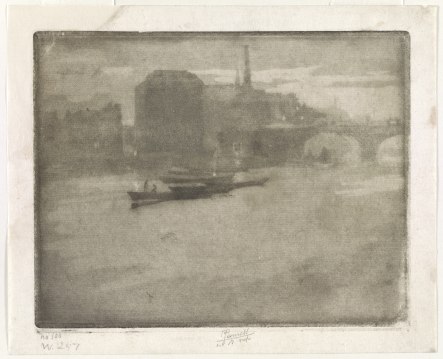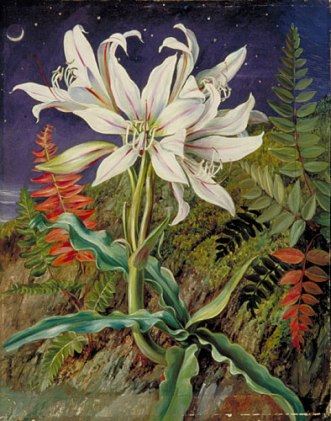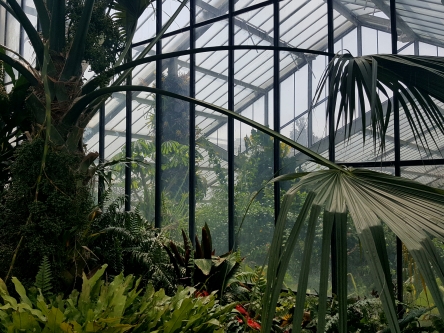(Part one can be found here)
Upstream, where the suburban boroughs of South West London merge into Surrey’s monied greenery, a number of small islands dot the Thames. Raven’s Ait, Lot’s Ait, Oliver’s Island: the names alone beckon, and these islets have long been a source of legend, carrying stories of secret underwater tunnels and Crusoe-style recluses.
But the river may hide something stranger. Jason Allen has come to believe that this stretch of the Thames has played host to the elusive island he knew as a child – the strange, isolated otherworld that claimed his childhood playmate, Eleanor.

After the words of his dying father brought a troubling clarity to Jason’s dreamlike memories of the island, Jason turned to his mother, Stephanie. Talking it through with his no-nonsense Mum would, he hoped, return the matter to the world of childhood imagination.
But the conversation didn’t go that way.
Stephanie brought out a box of her late husband’s papers. Amongst them was a newspaper cutting. It was dated 1997, and showed an article about a missing boy from Twickenham.
“There were two lads”, says Jason. He has since discovered everything he can about the story. As we walk the Thames path near Kew one muggy afternoon in August, he recounts it as if he were there.

The pair were future stars of their local rowing club. Even when not training, they’d be out on the river daily, exploring the leafy stretch that snakes between Kingston and Kew. One day, after a morning so misty they probably shouldn’t have been out at all, only one of the boys returned.
The story recounted by this boy – who’s name was Daniel – holds a deep, disquieting resonance for Jason.
Daniel had said that the two of them found a ‘new island’, somewhere on the shrouded water. After exploring the strange vines, broad leaves and large, colourful flowers, Daniel began to feel out of place. It wasn’t just the foliage that was wrong. The white bank of fog stopped unnaturally at the island’s shores, and the water lapping from beneath it was more like that of a sea than a river. Worse, there were ‘dark things’ among the trees.
But his friend, Simon, wanted to stay. The pair argued, and Daniel – angry, frightened – took the boat and pushed off. Almost instantly he changed heart, and turned back to find the island. But now he couldn’t locate it in the fog. As the sun rose and the mist gave way to a hot summer day on the river, Daniel rowed desperately, searching every river island from Chiswick Eyot to Raven’s Ait.
Simon was never found.

“21 years”, says Jason.
It takes a while for this to hit home. Then it dawns that Jason means the time between his own childhood experience with the island, in 1976 – when Eleanor disappeared – and 1997, the disappearance of Simon.
But 21 years have also passed from 1997 to now.
We have reached that part of the river that curls around the mannered gardens at Kew. The raised footpath here feels like a thread of reclaimed land. To one side of us is the muddy shore of the river, to the other a boggy ditch – which, along with a wire fence, separates us from the outer reaches of Kew Gardens, where paid-up picnickers are sprawled out beneath the boughs.
It is here that Jason begins his second story. One that begins earlier this year when, as a known nature-enthusiast in the school where he works, Jason was asked to join Year 5 on a trip to Kew.
For Jason, the trip would bring the whole strange story of the island crashing home.

One of the Year 5 kids – we’ll call her N – had been captivated. “Some of these kids have hardly been out of Brixton”, says Jason. “This part of London is like another world to them as it is”.
N was especially enthused by the Marianne North Gallery.
Marianne North was from a wealthy Victorian family. She spent much of the 1860s to 1880s travelling the world, blurring the lines between art and botany to paint the flora that she found. Several species are named in her honour.
Strangely for Jason, N was particularly drawn to the section of paintings from his father’s birthplace, Jamaica. These had always seemed otherworldly. Detached from the tales Jason’s father told of everyday life in Spanish Town. Detached also from the realities of colonialism he had read about. Yet there was something familiar in the magical, unpopulated paradise that North often depicted.

On the trip, Jason had made a conscious effort to put the island to the back of his mind. He knew the associations this part of London held for him, but he had a job to do, children to look after.
But stood in the gallery in front of North’s strange visions, he suddenly – violently – sensed the island’s presence. A ‘physical memory’ coursed through his body, so strong that he fell to his knees.
He soon recovered. And it was emerging from the gallery that the worst happened. A head count revealed that a child was missing.
It was N.

The frantic horror of the search was over in less than an hour. Confused visitors found N in the Princess Wales Conservatory, sleeping against a concrete shed, close to the tropical plant collection. How she had found her way there from the North gallery, and what had happened in the intervening hour, N would keep firmly to herself.
But a few days later, she approached Jason at school, and presented him with a token of apology. It was a painting she had made. Inspired by Marianne North, she said, and by the tropical flora of Kew gardens.
As Jason looked at it, N added that the painting’s setting had come to her ‘in a dream’. Jason recalls putting a hand out against the corridor wall to steady himself.
The painting was of an island.
No, Jason says it out loud, as if to reaffirm it in his mind: “It was a painting of the island”.
Looking across the river at the dark stand of trees which grips the muddy, heron-guarded shores of Brentford Ait, he tells me that these days the island is with him always.
N is still here, which is good news. But Jason searches the London news – half hoping for word of the island, half fearing what that might mean for somebody else’s child.
- Candidate: Simon’s Ait
- Type: Gateway / Otherworld Manifestation
- Status: Active (unconfirmed)

Pingback: Faraway islands (part 1): The Stockwell Bus Garage Manifestation – Portals of London
Another very enjoyable tale.I look forward to the next. Many thanks Brendan.
LikeLiked by 1 person
Thank you!
LikeLike